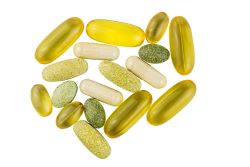Infographics
Search >>
Chlorates and perchlorates are chlorine-based oxyanions that have emerged as contaminants of concern in the food and dietary supplement industries. These compounds are highly soluble in water and persistent in the environment, making them difficult to eliminate once introduced into the supply chain. Continue reading to learn what you can do to test for these contaminants.
Ensure compliance and product safety with Eurofins' USP Microbiology Services. Learn how USP Testing and Suitability Testing help validate methods for dietary supplements, probiotics, and botanicals while avoiding false negatives and regulatory pitfalls.
Learn how to prevent, manage, and respond to a USDA NR (noncompliance record) in USDA-regulated facilities. This guide offers practical tips for minimizing USDA noncompliance records through strong food safety systems, communication, and expert support.
Certain seasonal botanicals may play a vital role in supporting women's health and overall wellness. Shatavari, dong quai, and milky oats are known for their deeply nurturing qualities, fostering balance, resilience, and gentle strength within the body. Click the link to continue exploring the benefits of these plants and their contributions to health and well-being.
Learn how data-driven E. coli testing improves process control and food safety in beef plants. Explore sampling strategies, harvest monitoring, and microbial analytics to reduce contamination risks and enhance regulatory compliance.
From ancient remedies to modern lab techniques, the science of vitamins has come a long way. Vitamin analysis plays a key role in making sure we get the right nutrients, whether through supplements, food, or baby formula. Keep reading to find out how testing is becoming more precise and efficient.
In the world of dietary supplements and botanical materials, accurate identity testing is essential for product safety, regulatory compliance, and consumer confidence. One of the most effective tools in this area is Thin Layer Chromatography (TLC), particularly in its high-performance form (HPTLC). Continue reading to find an overview of HPTLC, compendial HPTLC methods, selecting a fit-for-purpose method, the acceptance criteria, and the advantages and limitations of compendial methods.
California passed Assembly Bill 899, a law aimed at holding baby food manufacturers to a higher standard and mandating monthly testing of finished baby food products. As concerns grow about heavy metals in food, especially in infant formula, we must find a way to protect these vulnerable individuals. Read more about California Bill 899 by clicking the link.
Infant formula is often the sole source of nutrition for many infants, so it must be perfect. Testing standards can ensure that the nutrients in infant formula products are exactly at the level they are supposed to be and have become the guideline for measuring the quality of infant formulas. Learn what defines today’s testing standards—check it out now.
















